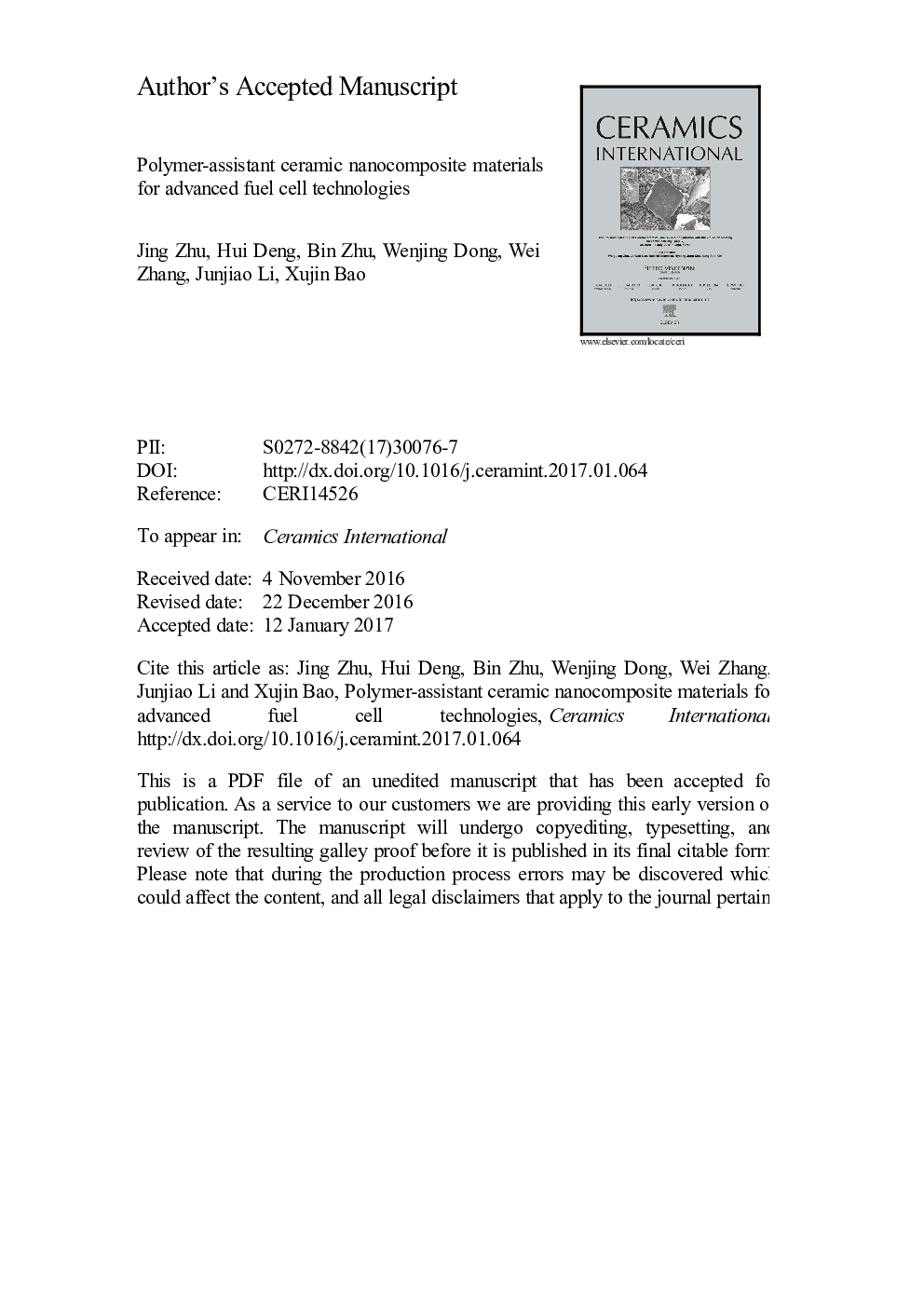| Article ID | Journal | Published Year | Pages | File Type |
|---|---|---|---|---|
| 5437551 | Ceramics International | 2017 | 22 Pages |
Abstract
In this studyï¼nanocomposites of LaCePr-oxide (LCP) and Ni0.8Co0.15Al0.05LiO2-δ (NCAL) with different contents of polyvinylidene fluoride (PVDF) were prepared and applied to solid oxide fuel cells. The composite materials were characterized by X-ray diffraction analysis (XRD), scanning electron microscope (SEM), thermogravimetric analysis (TGA), differential scanning calorimetry (DSC) and electrochemical impedance spectrum (EIS). The effect of PVDF concentration on the conductivity and performance of the fuel cells was investigated. It was found that PVDF plays a template role of pore forming in the nanocomposites, and the changed microstructure by as-formed pores greatly influences the electrochemical property of the nanocomposites. The cell with 3 wt% PVDF heat-treated at 210 °C achieved the highest power density of 982 mW cmâ2 at 520 °C, which enhanced performance by more than 57% than when no heat-treatment was implemented. It is 66% higher than the cell with no PVDF and no heat-treatment. Pores formed by PVDF after heat-treatment enlarged the triple phase boundary (TPB), which results in improved fuel cell performance.
Related Topics
Physical Sciences and Engineering
Materials Science
Ceramics and Composites
Authors
Jing Zhu, Hui Deng, Bin Zhu, Wenjing Dong, Wei Zhang, Junjiao Li, Xujin Bao,
